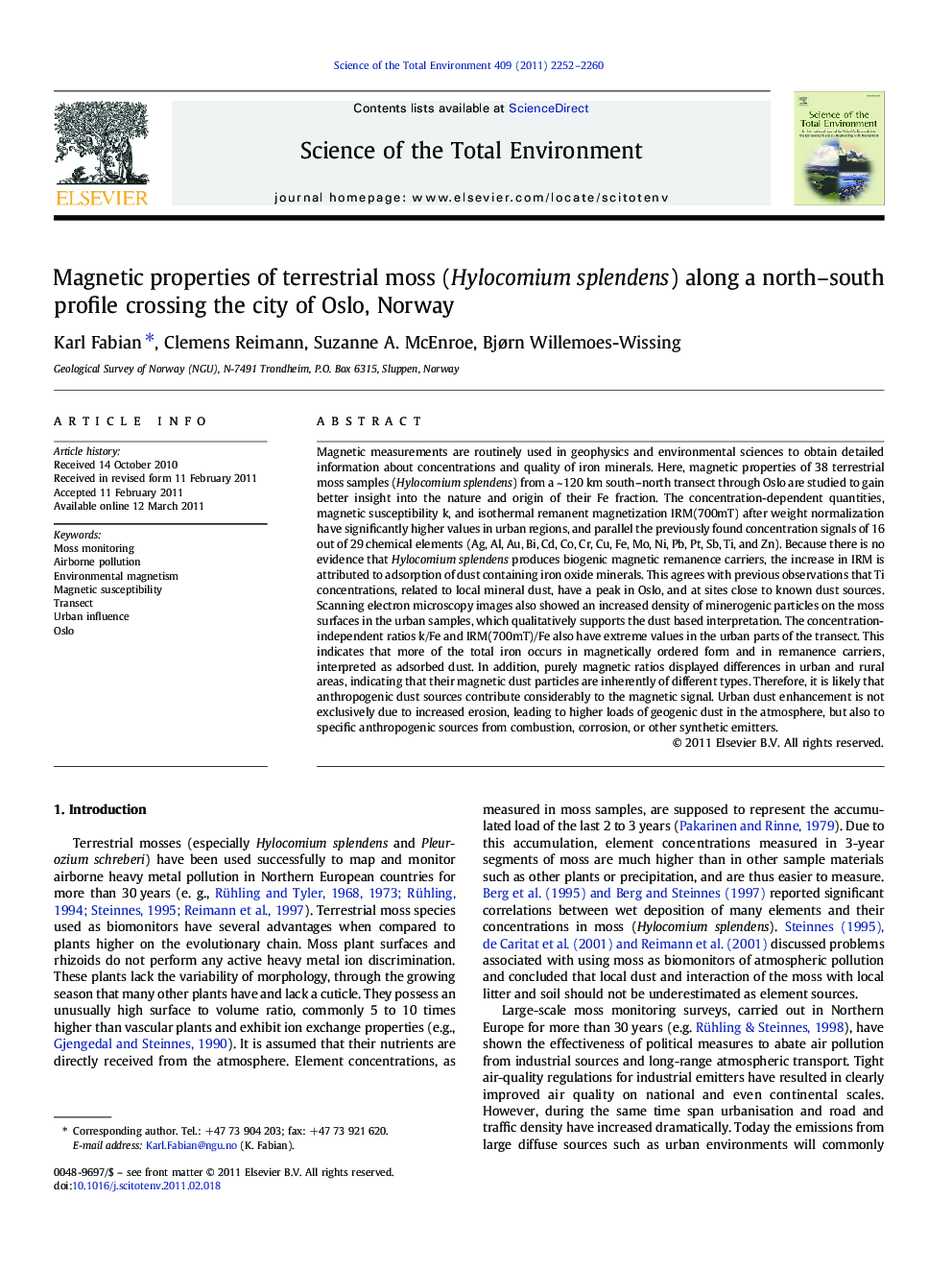| کد مقاله | کد نشریه | سال انتشار | مقاله انگلیسی | نسخه تمام متن |
|---|---|---|---|---|
| 4430492 | 1619851 | 2011 | 9 صفحه PDF | دانلود رایگان |

Magnetic measurements are routinely used in geophysics and environmental sciences to obtain detailed information about concentrations and quality of iron minerals. Here, magnetic properties of 38 terrestrial moss samples (Hylocomium splendens) from a ~ 120 km south–north transect through Oslo are studied to gain better insight into the nature and origin of their Fe fraction. The concentration-dependent quantities, magnetic susceptibility k, and isothermal remanent magnetization IRM(700mT) after weight normalization have significantly higher values in urban regions, and parallel the previously found concentration signals of 16 out of 29 chemical elements (Ag, Al, Au, Bi, Cd, Co, Cr, Cu, Fe, Mo, Ni, Pb, Pt, Sb, Ti, and Zn). Because there is no evidence that Hylocomium splendens produces biogenic magnetic remanence carriers, the increase in IRM is attributed to adsorption of dust containing iron oxide minerals. This agrees with previous observations that Ti concentrations, related to local mineral dust, have a peak in Oslo, and at sites close to known dust sources. Scanning electron microscopy images also showed an increased density of minerogenic particles on the moss surfaces in the urban samples, which qualitatively supports the dust based interpretation. The concentration-independent ratios k/Fe and IRM(700mT)/Fe also have extreme values in the urban parts of the transect. This indicates that more of the total iron occurs in magnetically ordered form and in remanence carriers, interpreted as adsorbed dust. In addition, purely magnetic ratios displayed differences in urban and rural areas, indicating that their magnetic dust particles are inherently of different types. Therefore, it is likely that anthropogenic dust sources contribute considerably to the magnetic signal. Urban dust enhancement is not exclusively due to increased erosion, leading to higher loads of geogenic dust in the atmosphere, but also to specific anthropogenic sources from combustion, corrosion, or other synthetic emitters.
Research Highlights
► Moss samples show higher magnetic susceptibility k in Oslo than outside.
► Ratios k/Fe or k/IRM(700mT) in moss show a clear peak in the Oslo region.
► Fine dust adhering to the moss surface is the likely carrier of the signal.
► Urban contains more and different magnetic minerals than rural adsorbed dust.
► Scanning electron microscopy confirms variable dust load on the moss surface.
Journal: Science of The Total Environment - Volume 409, Issue 11, 1 May 2011, Pages 2252–2260